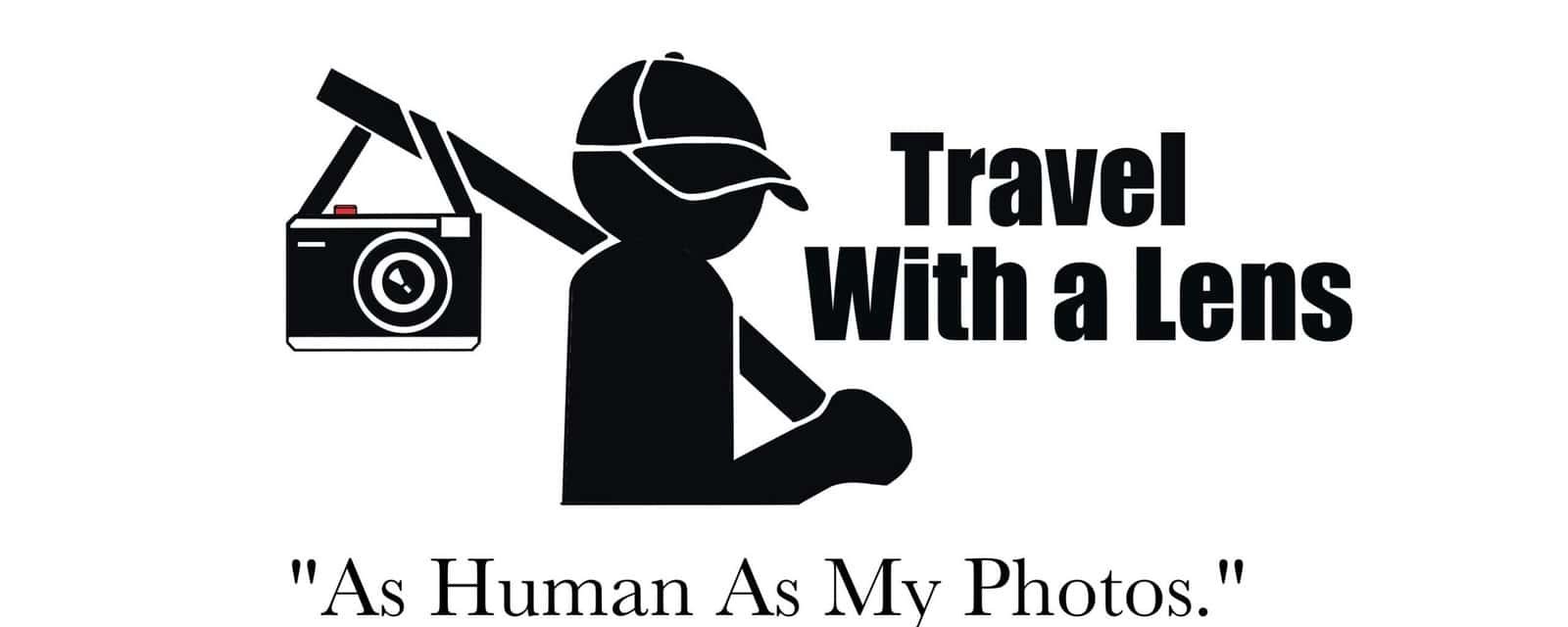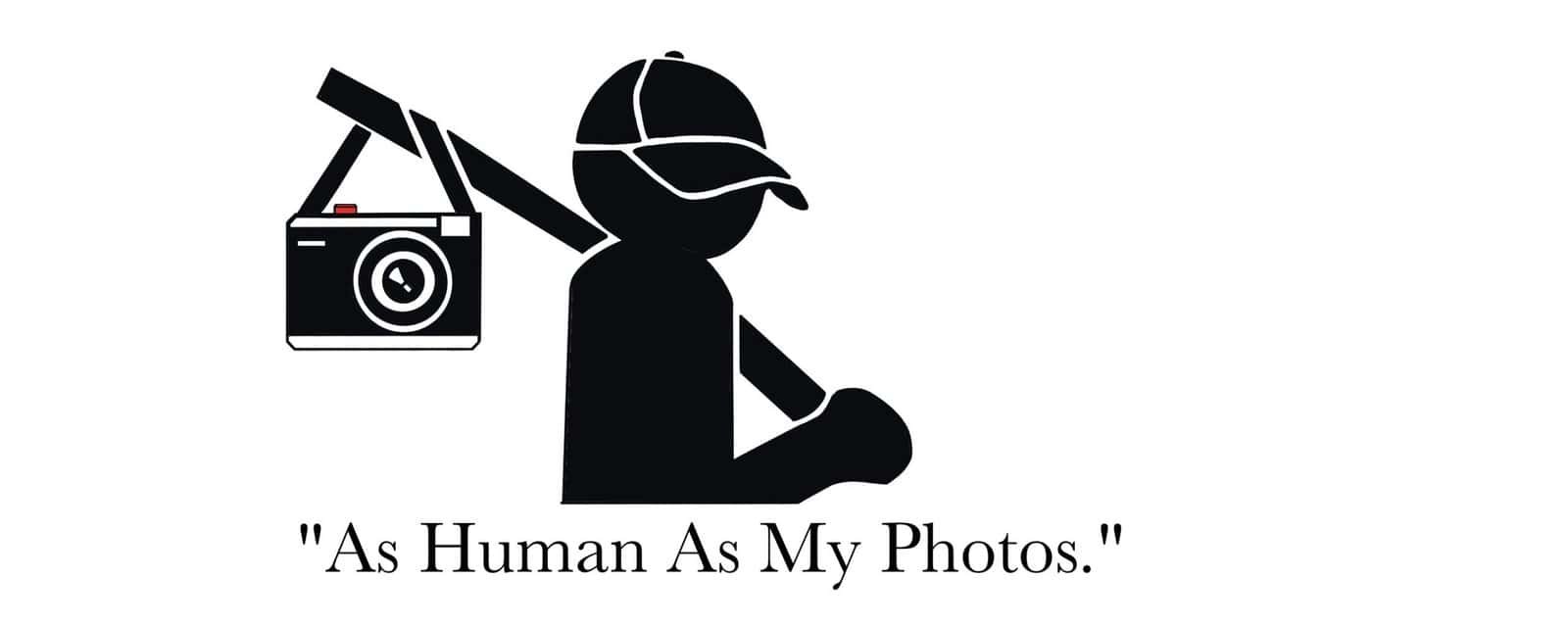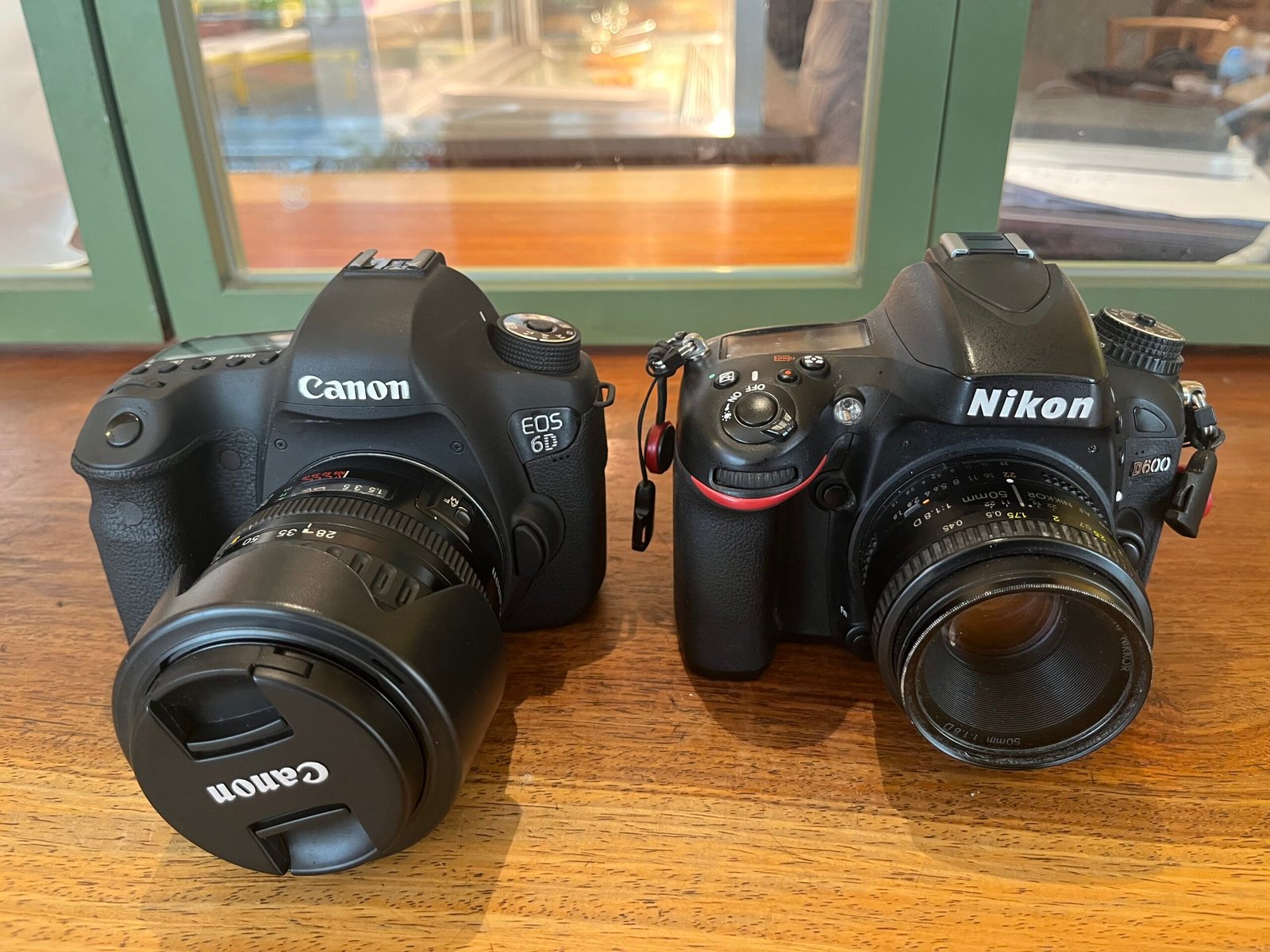Nikon D600 or Canon 6D Mark I In 2025?
By Sherrah — July 27, 2025
*With no extra cost to you this post has affiliate links – if you buy something from MPB, I get a free coffee.
The hard choice
Are you struggling on whether to get a full frame camera or not? Well there are two fantastic priced classic DSLR cameras for you to consider in this post, the Nikon D600 (full review) and the Canon 6D Mark I (full review).
Like many of you I have been through this so many times, which camera to I buy. That took a U-turn when I rediscovered the classic camera models. Then a new world opened up to me.
Eye watering cost
I actually find the price of APS-C cameras pretty depressing. A new mirrorless camera starts from from $500 brand new all the way up to around $1800. That’s a hard sell for me, especially in today’s economy .
Not that they aren’t great cameras, because they are, I mean they better be for the price right?
Okay I’m gonna stop complaining about the price of new cameras. This post is about these two legends the Nikon D600 and the Canon 6D Mark 1. I have put both through challenges of street photography on the streets of Mainland China and Hong Kong. But which one would I choose?
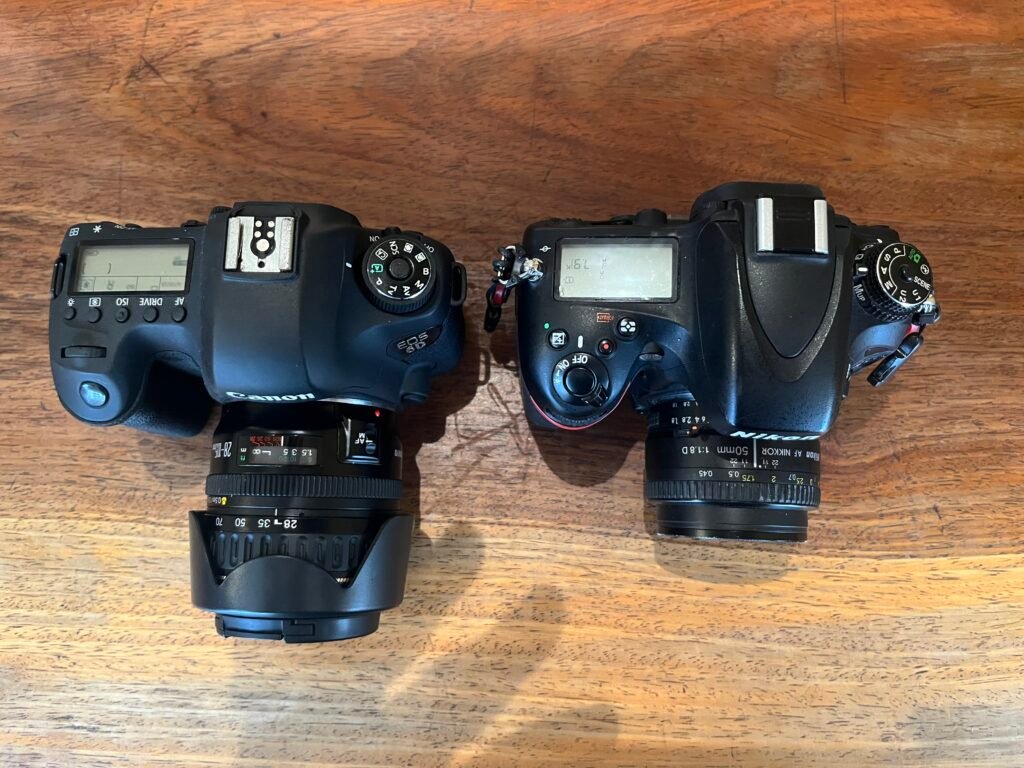
Why the Nikon D600 or the Canon 6D Mark I?
Price
It almost sounds silly to choose 12 year old cameras in 2025, but it really isn’t. It depends on what you value in a camera. Yes second hand prices range from $250–$400 USD but that’s not all.
Perfection in imperfection
In my humble opinion these sensors are not perfect, they don’t produce the same sharp images of lets say a new Sony full frame does. Both cameras interpret the light in their own unique ways.
Both Canon and Nikon in these earlier digital cameras were still trying to emulate film. Which in my opinion has led to some of the most extraordinary sensors.
Both of these camera sensors produce stunning colours and images, with a character that I think super modern cameras don’t reproduce.
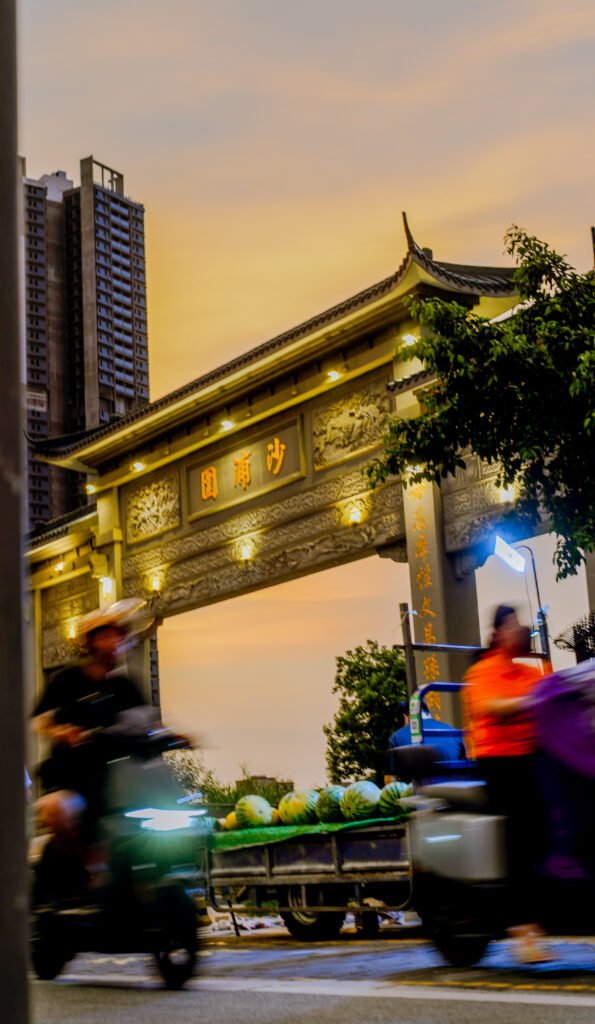
Autofocus
Yes they are slower, and you will get more out of focus shots. However good photos are not all about razor sharp images. I would argue its more about the feel, the story the atmosphere or even mystery on an image. Personally sharpness is not an actual priority for me. You can get that sharpness from an IPhone.
Dynamic range
They both have adequate or even good dynamic range, easily as good as APS-C cameras have today, and I would argue (because I love arguing) in many cases they are still much better.
Ergonomics
These cameras are in general heavier than today’s camera bodies, but they have great handling and the button layout on both cameras are just as convenient and intuitive as any camera produced today. Both Canon and Nikon spent so many years trying to perfect this.
LCD screens
Today’s camera’s with their touch screens are superior I will give you that. However I don’t really enjoy swiping a tiny screen, we all have that on our phones and iPads. If anything I practice photography to get away from electronic screens.
I must confess though, I still sometimes miss the flip screens, so that you can get that unique angle. Besides that I don’t really use the rear screen for shooting that much, I prefer the natural process of looking the EVF or OVF.
I have gotten used to and even enjoy looking at the histogram on an image to get an idea if I am under or over exposed. I don’t really need new fancy live modes, as fantastic as they are.
OVF vs EVF
Having an EVF (electronic view finder) is a great tool, you can see almost exactly how the photo will turn out in real time. With the OVF (optical view finder) you don’t get this.
To be honest though I enjoy looking through glass, it is nice to get back to basics. It’s refreshing.
All the extra information you get on EVF, exposure, your f-stops, shutter speed and everything else is nice, don’t get me wrong. It makes me feel like a terminator, with a a digital targeting system in my brain.
I love the simplicity of these old cameras and their view finders, it feels less like cheating.
Lowlight
Both these classic DSLRs perform well or even great in lowlight. They are not as good as the newest full frames for sure, but they are still better than the modern APS-C cameras.
The final photo
When I use the Nikon D600 for example, I’m not really sure how the final image will look on my iPad. The screen on either of these cameras just gives you but a simple rendition of the image will look like, The actual photo can look much different in lightroom.
As somebody who never really shot film, it reminds me of that process (I know how that sounds). You take the image and wait, for film it was much longer, for the Nikon I have to wait until I upload it to my IPad.
I enjoy that uncertainty, rather the instant feed back you can get today.
Let the battle begin
I’m exaggerating there is no battle, they are both wonderful cameras, but in many areas they have their own strengths. Let’s look at some.
Which is better in the hand?
Nikon D600
Out of the Nikon’s DSLRs the D600 is one of the smaller lighter ones. For me the D800 and D810 for example are simply too heavy. I feel D600’s weight and size at the upper end of just right. I could and have carried it for many hours with a 50mm lens. Let’s look at some of the advantages:
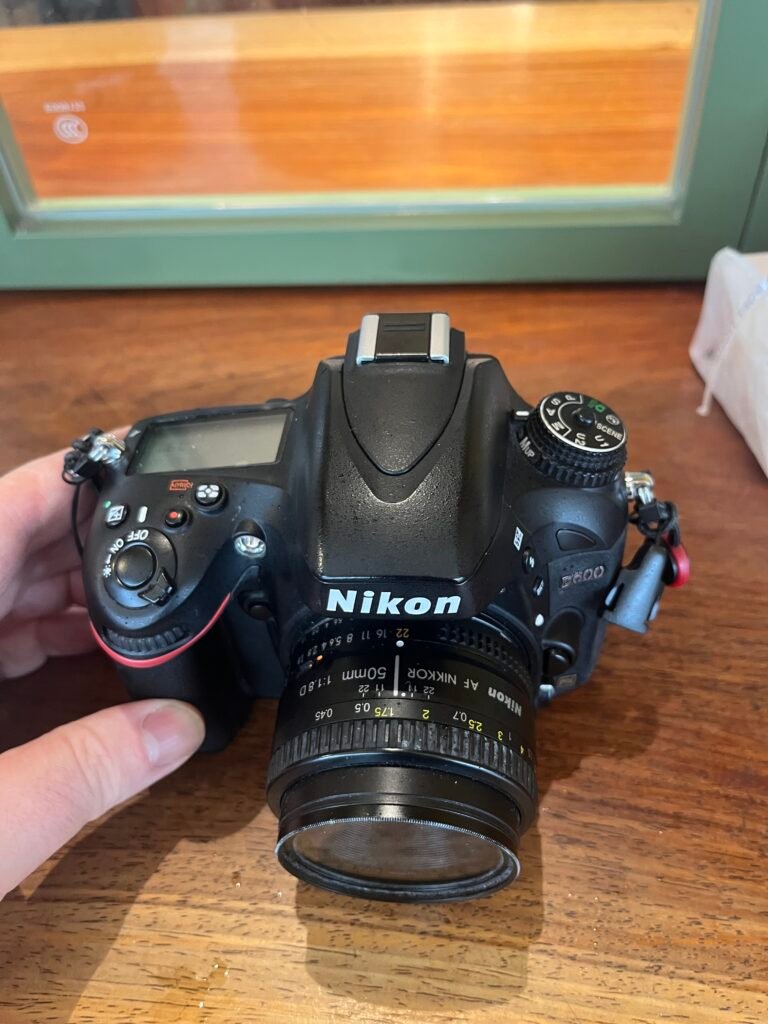
- I enjoy security of the nice deep grip
- The button layout is great
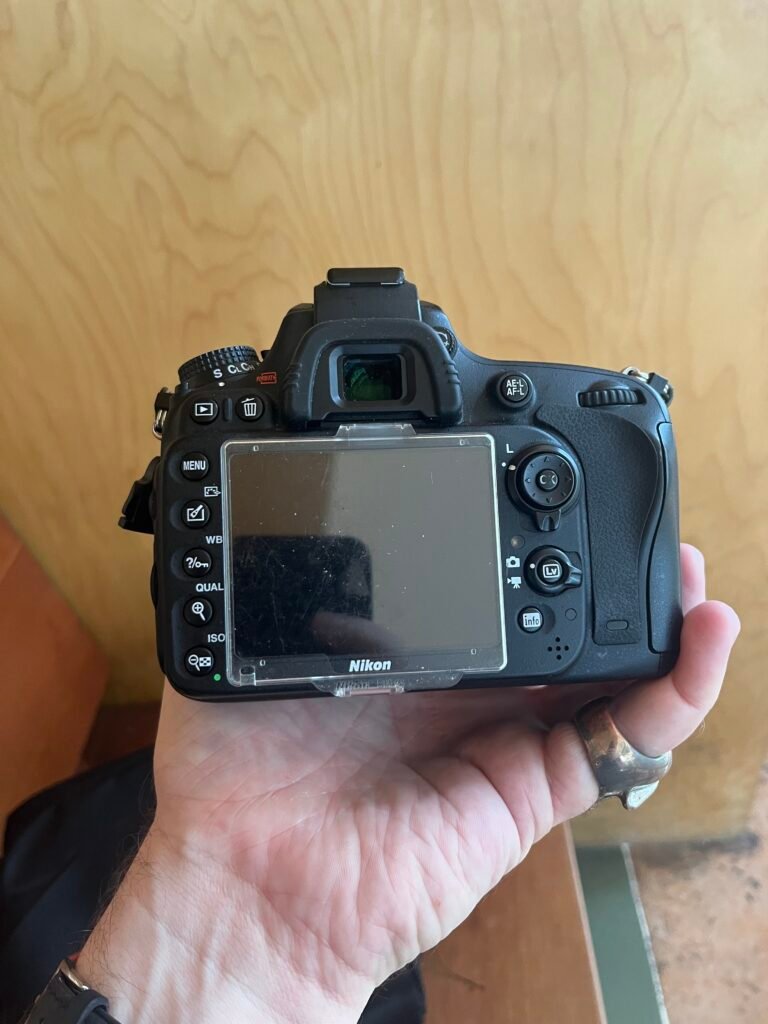
The button layout is possibly one of my favourites out of all cameras, with the exception of the Ricoh GRIII.
The layout from the live screen button to the on/off buttons just makes sense. Adjusting the exposure, menu, the delete and basically all the other functions get intuitive real quick. One distadvantage though:
- There is a switch between camera mode and video
- The on and off button comes switches on too easily
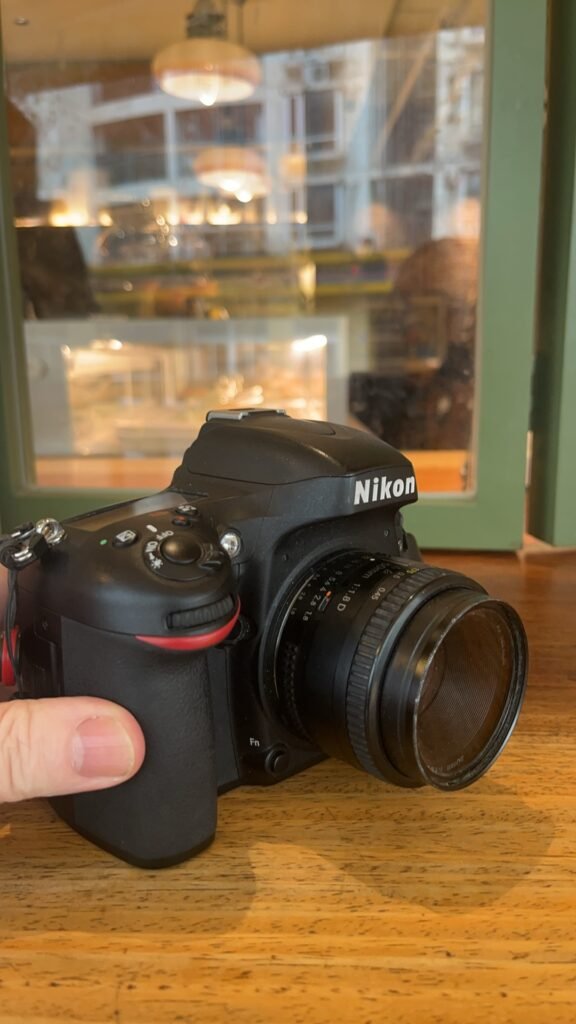
The only button I don’t like, is the switch between photo and video which flips on sometimes. The on/off button is super well placed, but sometimes it can accidentally be flipped on by mistake.
Canon 6D
Now this is where it gets interesting. The overall size of the 6D is a bit smaller and you can feel the difference in its weight too. It’s just a more compact camera. It somehow feels more sturdy and durable, of course I haven’t tested that. Lets look at some of the advantages:
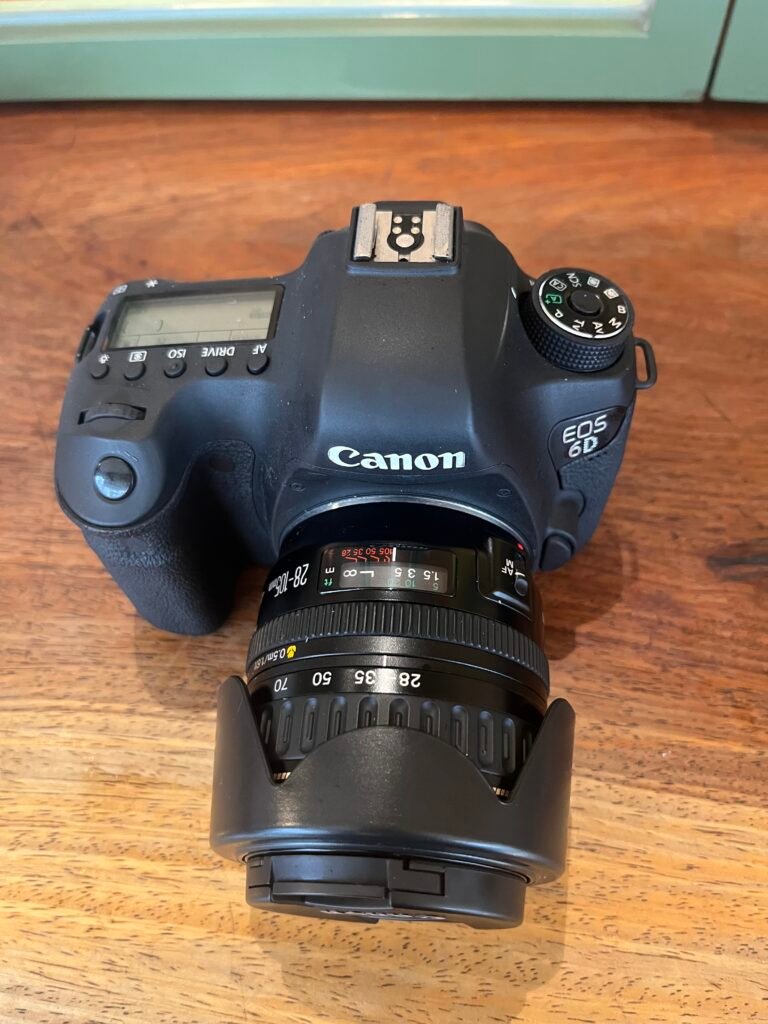
- Compact and lighter
- Nice grip
- Feels more durable
The grip for my hands was not quite as deep as with D600, I would definitely have to use a strap of some kind. The D600 wins this once for me. Although I do prefer 6D’s size and weight. Disadvantages
- On/off button – the placement is not intuitive
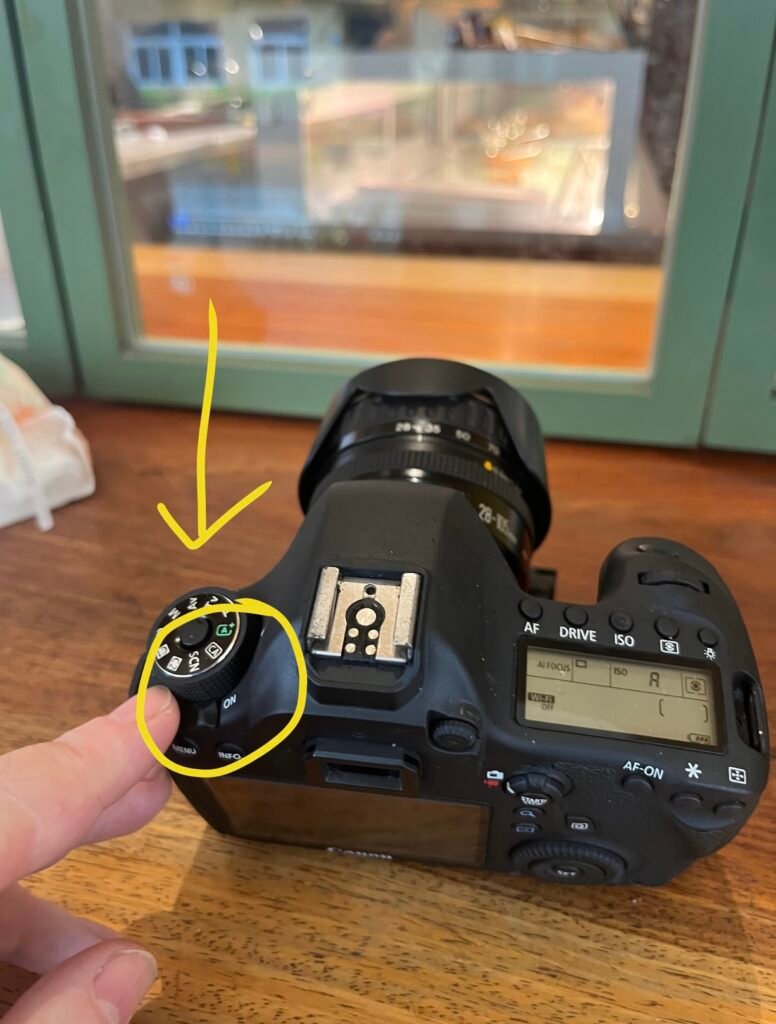
My biggest annoyance was the placing of the on off switch, its over on the left side and the button layout felt cramped to me.
Who wins: Eventhough the size and weight/build of the Canon 6D feels more premium I prefer the Nikon D600. The extra size and weight of the Nikon is cancelled out by the deeper, more secure grip. The button layout was easier to get used to as well, especially most notably the power button.
Which images blow my mind?
Both these great cameras produce wonderful files, but there is only one winner.
Nikon D600
Without any doubt the strongest point of this whole camera is the photos it takes as well as working with the files.
The files on this camera are perhaps the best I have come across. Well they are so easy to push or pull the highlights and shadows is pleasure with this camera.
There just seems to be so much wiggle room with the files. That said keep in my, I have very limited experience with more modern full frames.
It’s not easy thing to describe the quality of any image, without using the same words every other reviewer has used. But will try my best.
I have heard it described as cinematic, that doesn’t quite seem right either. I will show three of my favourite images I have taken from this camera that best illustrate this.

Colours in lowlight
The first is a night scene there is plent of rich artificial light with reflections and for sure the blend together so vibrant and liquid like molten gold.
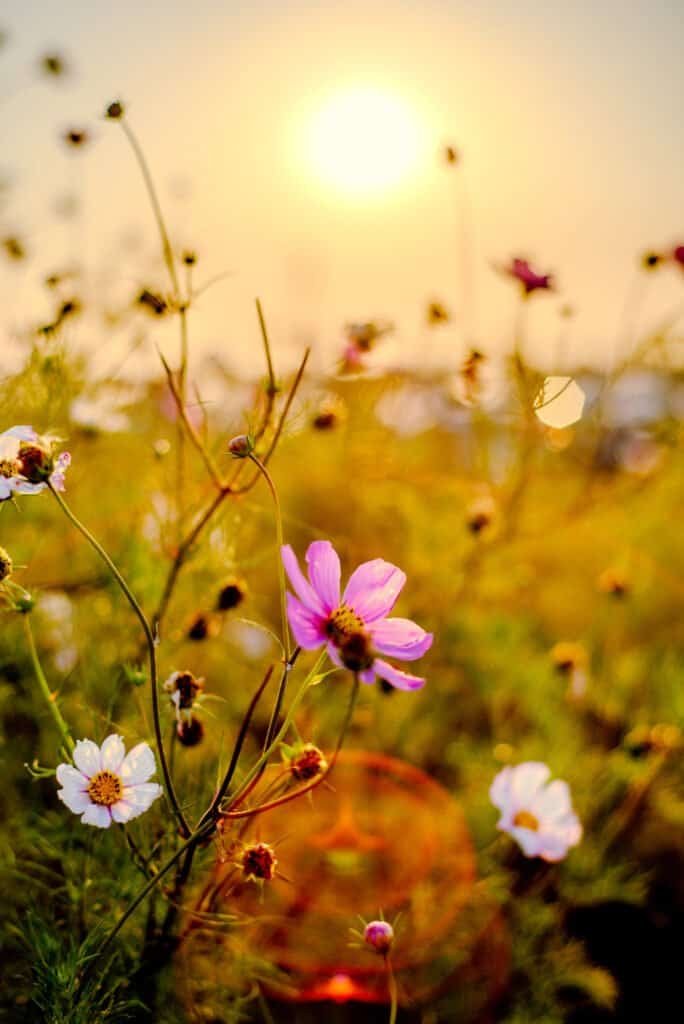
Colours in good light
The second was take at sunset in Shantou. This is lens flare on the image, which most of the times I don’t mind at all. The flowers have such rich vibrant almost pastel like qualities. It truly has an ethereal texture to it.
Lastly is a boring old residential structure. However as the sun hits the building it makes it golden, like a temple at sunset. The building is actually a rather boring grey but its hard to see that.
I will let the images speak for themselves. The Nikon D600 colours are bold and nostalgic they can also be dreamy
Canon 6D
As with the Nikon D600 the colours are strongest and most important plus of this camera. Canon is well famous for (yes I hate to say it) its colour science.
I normally shoot in raw but it has to be said that the colours straight out of the camera are excellent.
Below is a raw files not a jpeg but you can still see the pleasing almost earthy skin tones. Colours really do pop though, I fancy their not quiet as bold as the Nikon D600. Both cameras have a quality of that retro baked into the sensor. They are rich and subtle at the same time.

Colours in lowight
The Canon 6D Mark I delivers great images in lower light scenarios as well. If you look at the image below, its taken on a rainy night but you can still see that the colours especially the red of the umberalla really stand out, as well the shop signs in the background. Colours in good light

Colours in good light
The colours of the Canon are strong and warm especially for skin tones. Colours “pop” in daylight without oversaturation. I love the way it has processed the colours of the roof, both subtle and dreamy.
Who wins: This is hard to say and I think it comes down to preference. Both cameras produce retro like and nostalgic infused colours, which for today’s cameras don’t.
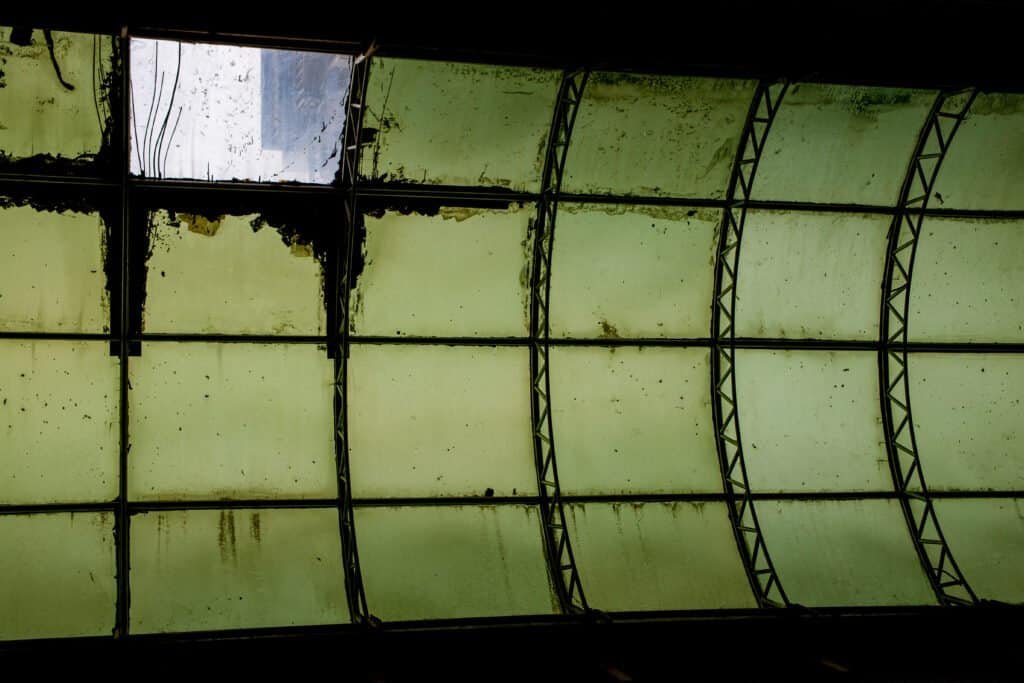
Who wins
I would say overall the Nikon D600 produces more punch colours, they both look great in low light as well as in good light. The Canon D6 does also produce great vibrant images with smooth understated tones.
In artificial and lowlight, I would cautiously say the Nikon D600 produces better colours, in low light.
However in good daylight, both cameras though subtly different produces equally gorgeous colours. Tentatively I prefer the skin tones on the Canon D6,
It really just comes down to personal taste. For me the Nikon still wins, although this is really hard to call, because I have spent more time taking better pictures with the D600. What do you think?
Overalll lowlight performance
I will not get into ISO which camera shoots the best at which value.
For me both cameras were excellent when they first came out. Both cameras have since been surpassed by newer cameras (Canon below)
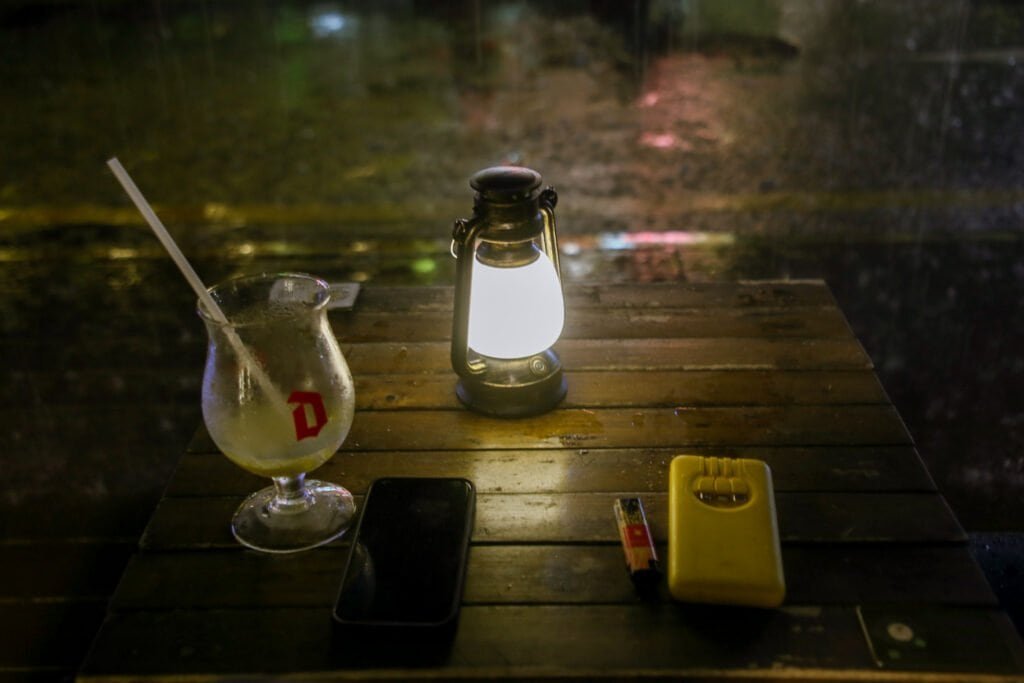
Who wins
The Nikon and the Canon cameras both perform excellent in lowlight for their age. I would say I think the Nikon D600 has the slight edge especially in darker situations (D600 below)

Autofocus in lowlight
Both cameras hunt in for focus in lowlight, both need a nice little light source to focus on.
Who wins
The Nikon D600 I feel hunts a little less. Again, I think it is really close. Both are fantastic when considering the price, and better tha newer APS-C mirrorless like Fujifilm cameras are in lowlight.
Monochrome
Have a look at the images below. For me the Canon (below) produces more pleasing black and whites than the Nikon (the 2nd photo). Actually the more I look I’m not sure, they both have their own style.

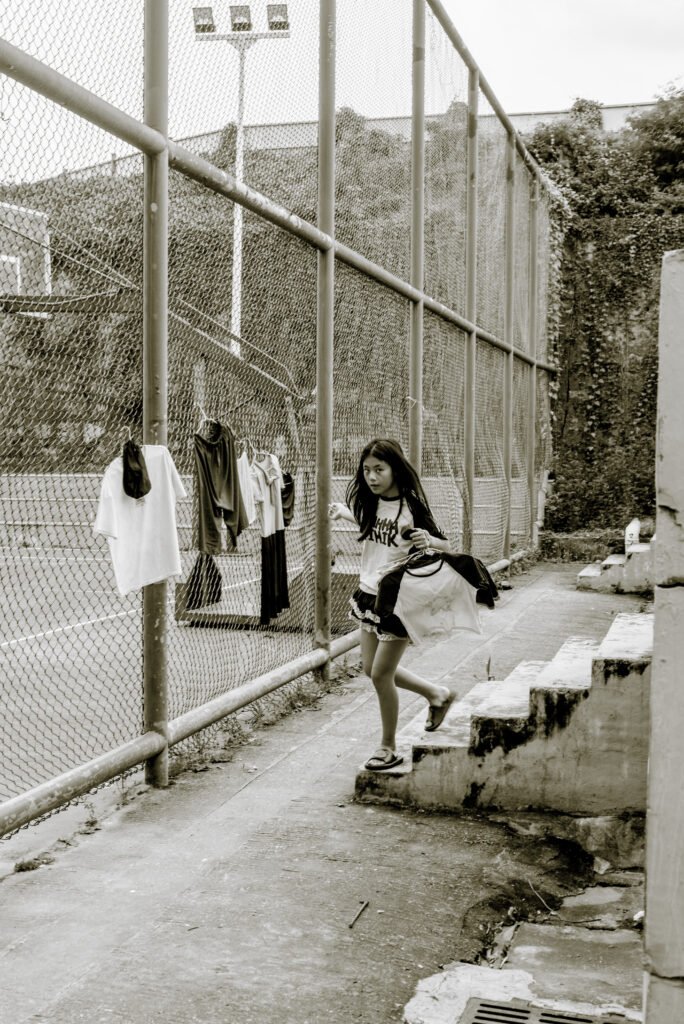
The screen
Both cameras have surprisingly good screens considering the age. They are both bright. I prefer the live mode on the Canon, but the menu of the Nikon is brighter.
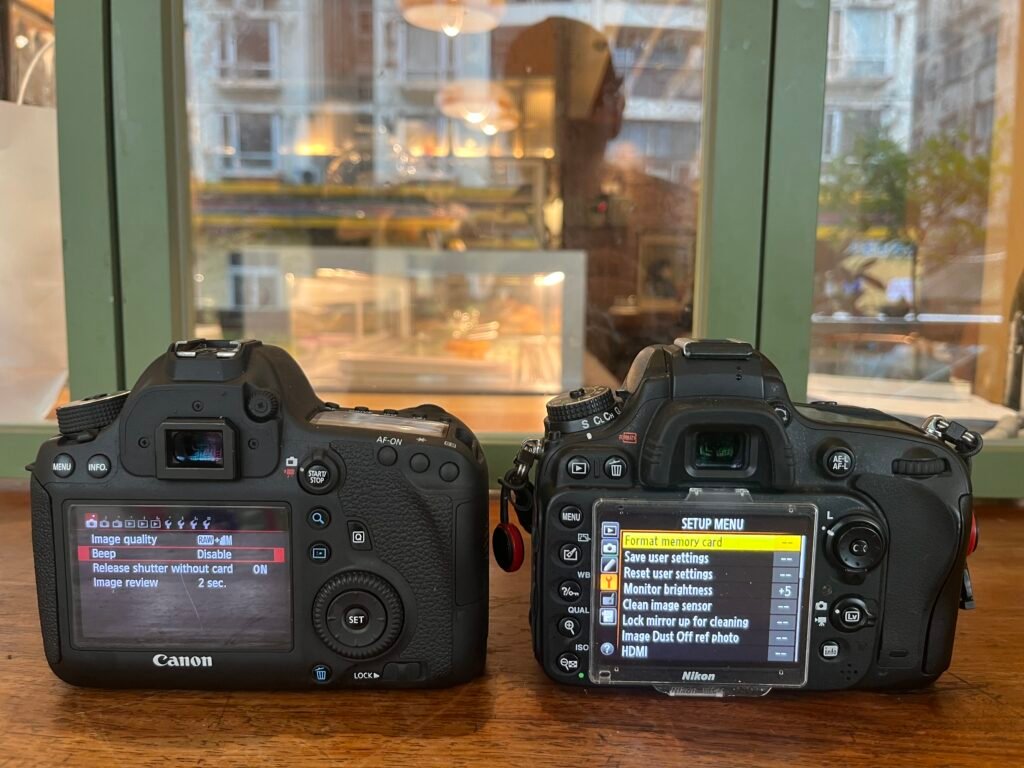
I slightly prefer the Canon’s screen even though it smaller, the photos and clarity in live mode, especially when adjusting for exposure is better.
With Nikon I have to take a shot, look at the photo’s histogram. With the Canon you can use the screen. That said I have gotten used to the Nikon’s more classic way of judging for exposure.
Battery Life
Nikon D600
I sometimes think the D600 is powered by a dark energy. Coming from APS-C cameras, Sony, Ricoh and Fuji I have been blown away by the battery life. Especially when its left hanging around unlove for 2 to 4 weeks, then to find the battery has hardly dropped at all. Even after a week of heavy use the battery still performs so well.
The battery is simply amazing.
Canon 6D
Now, the Canon is still a killer in this regard. It doesn’t take quiet as many images as the NIkon but it stamps all over modern cameras. The battery life is very, very good.
Who wins: powered by some forgotten ancient technology the Nikon is outstanding. I seriously have underestimated how much I would love the Nikon’s battery life.
The RAW files
I heard it said, that once you have used the NIkon D600 raw files, it would be hard to go back to other cameras brands. I couldn’t agree more. I completely and utterly love how much you can manipulate the Nikon files. There is so much depth to work with.
The instant I switched to my other cameras I realised how limited they seem in comparison. That’s not say the Canon files are less fun to work with, but they are not easy to stretch and pull in software.
Dynamic range
Both are good, the Nikon D600 is better. You might not even need filters for some landscape shots with this.
The Canon is still good, but the range of light and dark is not as great as the Nikon. It is still good, but the D600 is just better.
Who’s is the D600 for
Let’s make a quick list to see if theirs camera is for you:
- You’re looking for a strong sturdy with a deep grip
- You’re a fan of simple easy to navigate menu systems
- Intuitive button layout
- A battery that refuses to die
- Solid autofocus even in low light
- Good dynamic range
- Superb raw files
- Goregous, vibrant nostalgic images
- Dual SIM card slot (not a deal breaker, one is fine too)
Choose the Nikon.
It would be really suited if you’re doing a long trip, or long days of street/travel photography.
I’m sure it would make an excellent landscape camera as well, the colours and dynamic range are outstanding. Needles to say this is fantastic portrait camera to boot.
Who is the Canon D6 Mark I for?
Thought similar to the Nikon D600 in many way, it’s definitely a unique and special canon camera in its own right. Let’s have a look:
- If you want a great looking camera choose this.
- Sturdy and compact camera
- You get beautiful skin tones and vibrant colours,
- Good performance in low light
- If you want dreamy bold and yet subtle retro like images
- Decent autofocus
- Good raw files to work with
- Very good battery life
If you want these features then choose the Canon 6D.
This camera is really well suited to protraits, landscapes, street/travel photography it really is a versatile camera.
Final thoughts
There is no clear winner actually. I prefer the Nikon D600 which I think is obvious. When you consider the price and the quality that both cameras offer you will be happy with either camera.
Neither camera is suited to fast action or even video. Neither cameras can compete with the tracking of modern cameras. It’s newer competitors will win in low light environments.
However that is not the whole story, that’s why I don’t do stats that much. It really is all about the final image.
Both of these beauties create classic, nostalgic and vibrant images that are so much more interesting than any modern camera’s sensor can’t really match (in my opinion).
These cameras take you back to the basics of photography. You could say they don’t get out of your way, like the more modern do. Or you could say they bring joy and deeper involvement into the process of making that final image.
Here are other posts you might like
If you’re interesting in challenging your photography why not read my suggestions here, and see what I am doing to challenge myself in 2025 here. If you are looking to up your game you could also check out my street photography/travel photography here.
If you want to check the prices of gear or cameras try MPB
- 🇺🇸 MPB shop US
- 🇬🇧 MPB shop UK
- 🇪🇺 MPB Shop EU (English)
